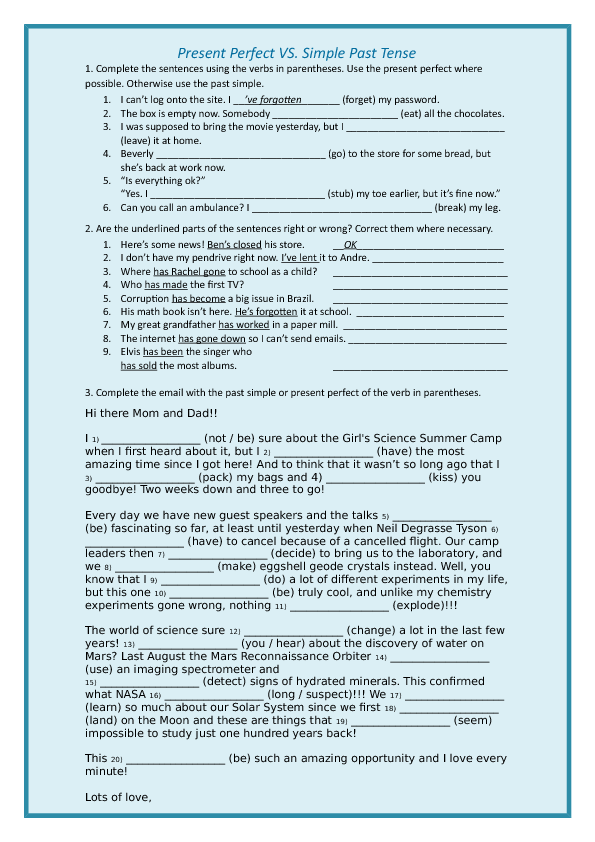Worksheet Present Simple Vs Present Continuous Pdf
The transition from teaching one verb tense to teaching another isn’t always a clear-cut process. While it’s easy for most students to distinguish, say, the future simple tense from the past simple, it’s not always as easy for them to tell two similar verb tenses apart. One of the most common mixups is between the present simple and present continuous tenses - “I go” versus “I’m going” - which sometimes seem to be used in almost interchangeable ways. Throw in the fact that many other languages use these tenses according to different conventions than the ones used in English, and you’ve got a recipe for a lot of frustration and confusion. Some teachers try to address this confusion by simply correcting students on the fly until they start to get the hang of the distinction. Other teachers use fill-in-the-blank worksheets to help students see the contrast between the present simple and present continuous tenses.
And still others focus on encouraging students to produce the tenses in realistic speech. Many teachers would agree, though, that the most effective approach of all is one that combines each of these tactics. That’s why BusyTeacher.org offers 184 worksheets that help students see the contrast between the present simple and present continuous verb tenses. These worksheets address a lot of common situations in which students get confused about the usage rules of these tenses, so they can start to work out for themselves where the present simple is appropriate, and where the present continuous makes sense.
With these 184 worksheets on hand, you’ll never run out of exercises for practicing the present simple and present continuous tenses - no matter how many class period is takes to make sure your students get them right. BusyTeacher.org’s 184 present simple and present continuous tense worksheets approach these tenses in a wide variety of ways. Some are simple fill-in-the-blank exercises; while others invite students to match a list of pictures with the right tenses. Some lay out exercises or activities that help students learn the differences between these tenses - and still others can help you kick off games that’ll give students a break from board work.
And you won’t just find variety in the approaches these worksheets offer - they also pull their inspiration from a wide range of areas. Some of them just focus on simple sentences, so students can work with familiar vocabulary.
Others provide examples of the present simple and present continuous tenses in popular songs and movie clips, and let students learn how native speakers (and singers) actually use these tenses. If you’re working through a unit on holidays or countries, you can probably find a worksheet that’ll fit right into that theme, too. Our huge variety of present simple and present continuous tense worksheets comes as a result of our active community of ESL teachers all over the world. They’ve shared these worksheets with other teachers like you, for free - not even registration on our site is required to download, print, use, and share them. The only thing we ask is that if you’ve got a worksheet of your own that’s been a hit with your class, you share it with the community by clicking the “Submit a worksheet button at the bottom of this page. Browse all the present simple and present continuous worksheets using our handy thumbnail view, and print off some that catch your eye.
Present Continuous Test Pdf
We’re sure they’ll be popular in your classroom, too!


GRAMMAR6 Present continuous and present simple Explanations Present continuous To talk about things happening at the moment, use the present continuous. Present simple and continuous tense - exercises with answers, PDF worksheets and grammar rules with examples.
Present simple vs present continuous worksheets to download for free and practise the difference between these two forms (for elementary students of English): Affirmative (positive statements): + Choose the correct tense. + Complete the sentences with the verbs in brackets. + Put words in the correct order and use correct forms. Questions: + Read answers and complete questions. + Put words in the correct order to make questions. Negative statements: + Read sentences and make them negative. + Read questions and make negative answers.
Mixed forms - positive, negative and questions: + Choose the correct form from each pair of sentences.